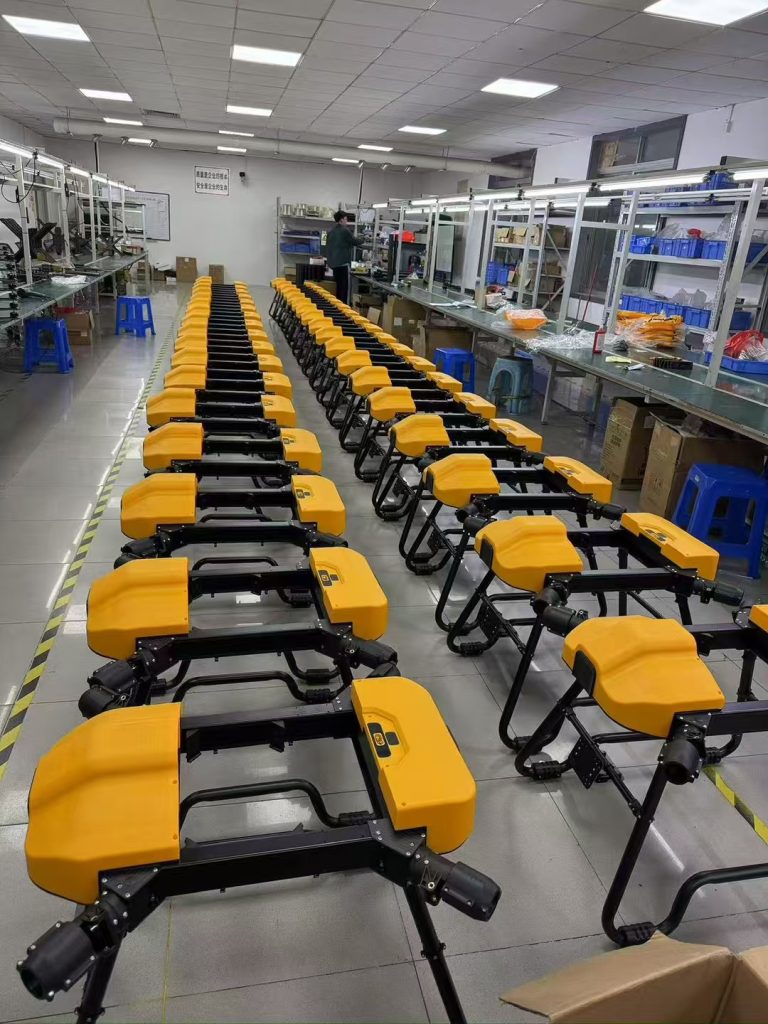
Agriculture faces an existential challenge: by 2050, the global population will hit 10 billion, demanding a 50% increase in food production—with less land, water, and tolerance for environmental harm. Traditional crop spraying methods—manual labor, tractors, and manned aircraft—are ill-equipped to meet this demand. They waste up to 50% of chemicals, expose farmers to toxic fumes, and pollute ecosystems. Enter agriculture spraying drones: unmanned aerial vehicles (UAVs) that merge robotics, AI, and remote sensing to deliver targeted, efficient, and sustainable crop protection. These flying machines are not just tools—they’re a paradigm shift in how we grow food, balancing productivity with planetary health.
The Failure of Traditional Spraying: Why Change Is Urgent
Before exploring drones, it’s critical to understand why legacy systems no longer work:
1. Wasteful Overuse
Blanket spraying—applying chemicals uniformly across entire fields—wastes 30–50% of pesticides and fertilizers. This inefficiency drives up costs for farmers and contaminates soil, water, and non-target species (like bees).
2. Labor Risks and Shortages
Manual spraying requires backbreaking work, especially in hilly or large fields. Farmers and laborers face chronic exposure to toxic chemicals (leading to 200,000 annual poisoning deaths) and physical injury. Meanwhile, rural populations are aging, and young people are fleeing farms—creating a labor crisis.
3. Environmental Degradation
Runoff from over-spraying pollutes rivers, killing aquatic life and threatening human water supplies. Drift from tractors and planes harms beneficial insects and neighboring crops, destabilizing ecosystems.
4. Inaccessibility for Smallholders
Small family farms—feeding 35% of the global population—often lack the capital for tractors or access to manned aircraft. Terrain (steep slopes, fragmented plots) further limits their ability to spray effectively.
Core Technologies: How Spraying Drones Solve These Problems
Agriculture spraying drones are engineered to deliver precision at scale. Their power lies in four integrated technologies:
1. Sensing & Imaging: Mapping Crop Health from Above
Drones start by “seeing” the field. Multispectral and hyperspectral cameras capture light across visible and invisible wavelengths (e.g., near-infrared, red-edge). Healthy plants reflect more near-infrared light; stressed plants—damaged by pests, diseases, or drought—reflect less.
AI algorithms convert this data into vegetation index maps (e.g., NDVI), highlighting exactly where to spray. For example:
-
Red zones: Severe pest infestations (e.g., fall armyworm in corn).
-
Yellow patches: Nutrient deficiencies (e.g., low nitrogen in wheat).
-
Green areas: Healthy crops.
LiDAR (Light Detection and Ranging) adds 3D terrain maps, critical for navigating uneven fields or orchards. Thermal cameras detect heat signatures from pest colonies or irrigation issues—enabling early intervention.
2. Navigation & Flight Control: Centimeter-Accurate Precision
To spray effectively, drones must fly with surgical precision:
-
RTK-GPS: Provides centimeter-level accuracy, ensuring drones follow pre-mapped routes without drifting. This is vital for avoiding overlaps (which waste chemicals) or missing spots in large fields.
-
Vision-Based Collision Avoidance: Downward and forward-facing cameras let drones “see” trunks, branches, power lines, or wildlife. They adjust speed and trajectory in real time—critical for orchards or fields bordered by forests.
-
Swarm Intelligence: Fleets of drones work together, dividing fields into grid cells and coordinating flight paths to avoid collisions. A swarm of 20 drones can spray 10,000 acres in a day—equivalent to 50 tractor passes.
3. Spraying Systems: Targeted, Gentle, and Efficient
The heart of a spraying drone is its variable-rate spraying (VRT) system, optimized for minimal waste and maximum impact:
-
Centrifugal Nozzles: Atomize liquid into micro-droplets (50–200 microns)—10x smaller than traditional sprayers. These tiny droplets stick to leaves and penetrate canopies without drifting.
-
Smart Pumps: Adjust pressure to deliver more chemical to infected zones and less to healthy ones. A drone can switch from 5 L/acre (infected) to 1 L/acre (preventive) mid-flight—cutting waste by 40–60%.
-
Directed Airflow: Downward-facing fans push droplets into the canopy (reaching lower branches) or onto leaves (avoiding blowoff in wind). This is critical for crops like apples or tea, where hidden pests or delicate leaves matter.
4. Autonomy & Data Integration: Farming from the Cloud
Drones are not just sprayers—they’re data hubs. Every flight generates terabytes of information, processed in the cloud to:
-
Adjust in Real Time: Pause spraying if rain is forecast (to avoid washout) or switch to spot-spray mode if a new pest outbreak is detected.
-
Generate Insights: Turn spray data into yield forecasts, input recommendations, and carbon footprint reports. Farmers use this to optimize future decisions.
-
Simplify Management: A single operator can monitor 50+ drones from a laptop, tracking battery life, spray volume, and progress across multiple fields.
Transformative Benefits: Why Drones Are a Game-Changer
Spraying drones solve more than just “coverage”—they redefine profitability, sustainability, and farmer well-being:
1. Less Chemicals, Better Crops
By targeting only affected areas, drones reduce pesticide use by 30–60%. This means:
-
Lower Residue: Fruit and vegetables meet strict consumer and regulatory standards—commanding premium prices.
-
Healthier Ecosystems: Less runoff protects pollinators (bees) and waterways.
-
Higher Yields: Healthier plants produce more. A Washington apple grower reported a 15% yield increase after switching to drones—fewer pests damaged blossoms.
2. Speed: Stop Outbreaks Before They Escalate
Pests like soybean aphids or locusts spread at 2–3 miles per day. Drones act as a “first line of defense”:
-
A swarm of 10 drones can spray 5,000 acres in 8 hours—stopping an aphid outbreak before it reduces yields by 20%.
-
In Brazil’s Mato Grosso soybean belt, farmers use drones to spray within 12 hours of a pest alert—cutting losses from 15% to 3%.
3. Farmer Safety & Labor Relief
Drones eliminate direct contact with toxic chemicals:
-
No Mixing, No Exposure: Farmers monitor drones from a safe distance, avoiding fumes or spills.
-
Reduced Labor Costs: A 10,000-acre farm needs just 2 operators to manage a drone swarm—down from 20 manual sprayers.
4. Data-Driven Decisions
Drones turn spraying into a learning tool. Every flight answers questions like:
-
Which areas get sprayed most often?
-
Which pests return yearly?
-
How does spray timing affect quality?
A Spanish vineyard owner used drone data to adjust sulfur sprays for powdery mildew—targeting only south-facing rows. The result? 40% less sulfur use and better-tasting grapes.
Real-World Impact: Drones in Action
Spraying drones are transforming farms worldwide:
1. Smallholder Rice Farm, Guangdong, China
A 20-acre farm struggling with stem borers used drones via a drone-as-a-service (DaaS) model. Results:
-
Chemical Use: Down 50%.
-
Labor Costs: Cut from 1,500 to 300 per season.
-
Yield: Up 12%—fewer borers damaged grains.
2. Citrus Grove, Florida, USA
A 500-acre grove battling citrus greening (a deadly bacterial disease) used drones to target infected trees. Results:
-
Spray Time: Reduced from 3 weeks to 4 days.
-
Disease Spread: Slowed by 40%.
-
Residue: 35% lower—allowing sales to premium markets.
3. Wheat Farm, Punjab, India
A 15,000-acre farm facing water scarcity used drones to spray a moisture-retaining polymer. Results:
-
Water Use: Down 30%.
-
Yield: Up 10%—healthier plants produced more grain.
Challenges: Pathways to Wider Adoption
Despite their potential, spraying drones face hurdles:
1. Regulatory Fragmentation
Airspace rules vary by country:
-
U.S. (FAA): Requires Part 107 certification for pilots and limits swarm size.
-
EU (EASA): Restricts flight altitude to 120m and requires manual oversight.
-
India: Recently relaxed rules but still requires permits for large fleets.
Solution: Governments are adapting—Brazil now allows drone swarms up to 1,000 units for agriculture.
2. Battery & Payload Limits
Most drones fly 20–30 minutes and carry 5–20 liters of liquid. Emerging solid-state batteries (5x longer life) and hydrogen fuel cells could solve this—but they’re not yet mainstream.
3. Training & Adoption
Older farmers may resist new technology. DaaS models (pay per acre) and local training programs are bridging this gap—growers don’t need to buy drones to benefit.
The Future: Smarter, Greener Spraying
The next decade will see spraying drones evolve into fully integrated smart farming tools:
1. AI-Driven Autonomy
Drones will use real-time data (weather, pest forecasts, soil moisture) to adjust spraying mid-flight. For example:
-
If rain is coming, pause to avoid washout.
-
If a new pest outbreak is detected, switch to spot-spray mode.
2. Next-Gen Batteries & Payloads
Longer flight times and heavier payloads will make drones viable for the largest farms:
-
Solid-State Batteries: Extend flight time to 60+ minutes—covering 200+ acres per charge.
-
Larger Tanks: Carry 30–40 liters of liquid, reducing refills.
3. IoT Integration
Drones will connect with soil sensors, weather stations, and ground robots:
-
Soil Sensors: Detect low potassium → drone sprays a targeted solution.
-
Weather Stations: Predict drought → drone activates precision irrigation.
4. Sustainability at Scale
Drones will help farms become carbon-negative:
-
Less tractor use → lower fuel emissions.
-
Targeted chemical use → less runoff → healthier ecosystems.
Conclusion: Drones Are the Future of Farming
Agriculture spraying drones are more than technology—they’re a lifeline for farmers and the planet. They solve the flaws of traditional methods: waste, risk, and environmental harm. They empower smallholders and scale for large farms. They protect crop quality and farmer livelihoods.
As a rice farmer in Vietnam put it: “Before drones, I sprayed blindly, hoping to save my crop. Now, I spray smart, and I sleep easy.”
The sky’s the limit for spraying drones—and for the future of agriculture. They’re not just flying machines; they’re the key to feeding 10 billion people, sustainably.
THE END

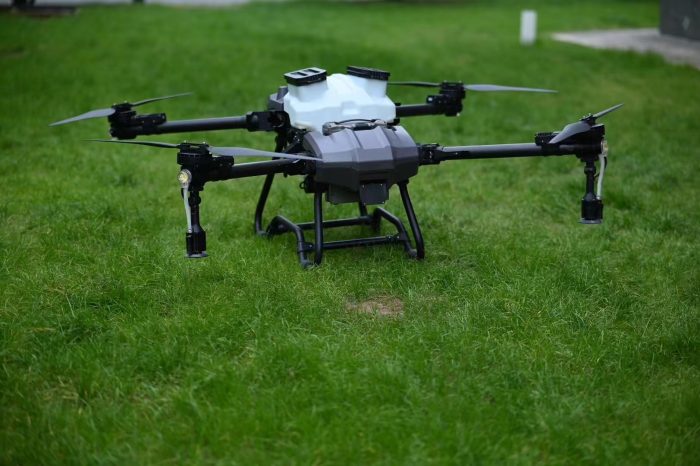
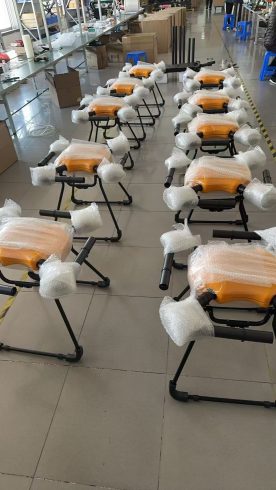
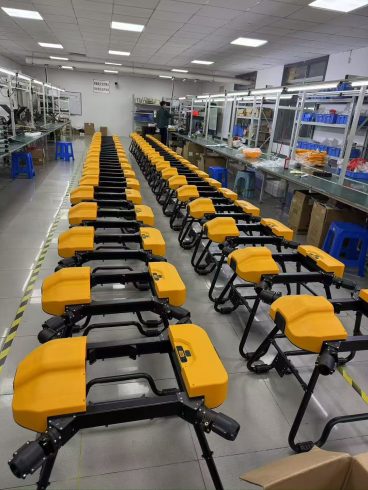


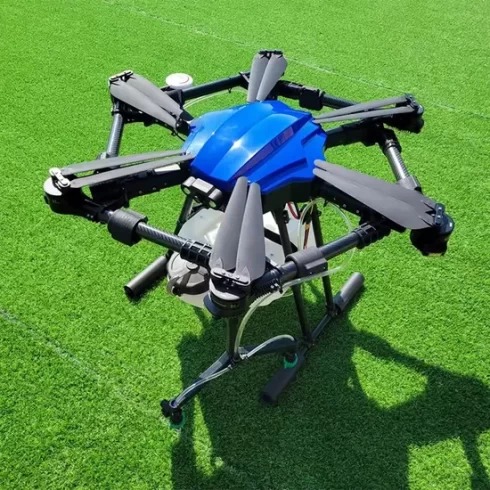

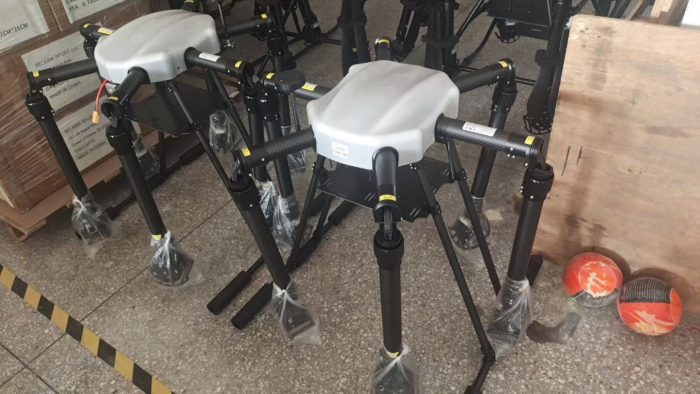

暂无评论内容